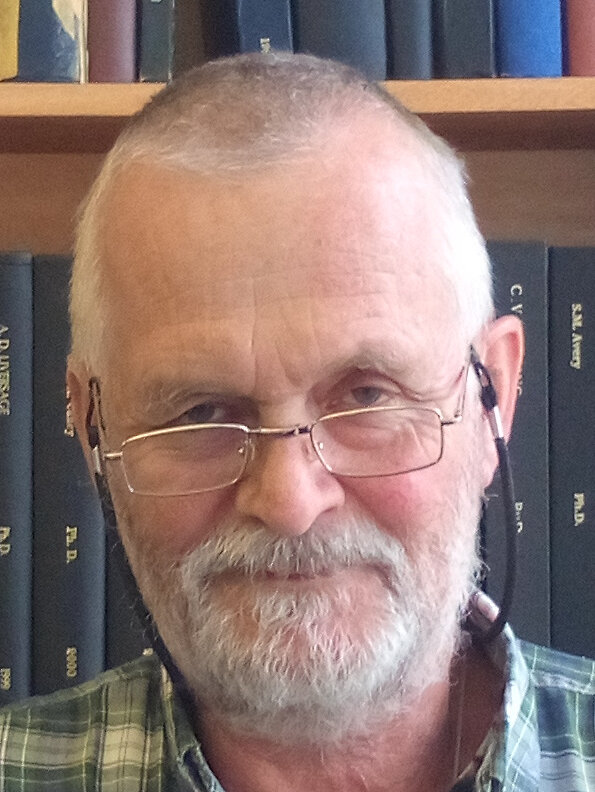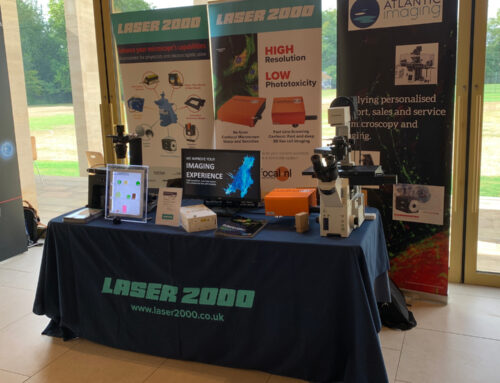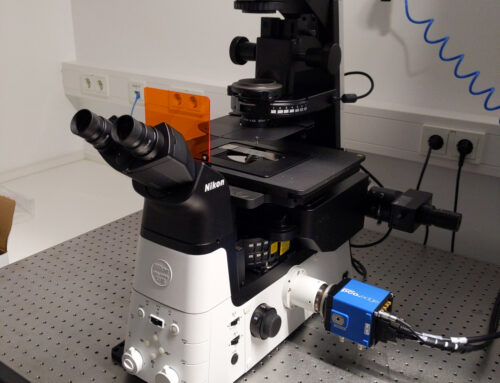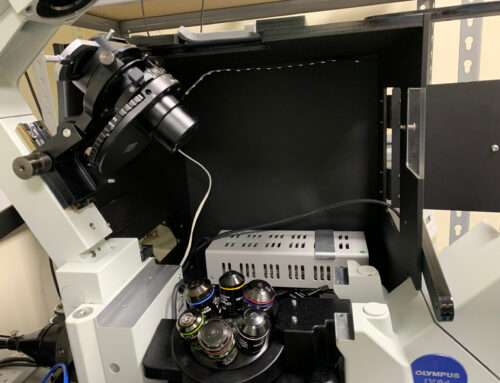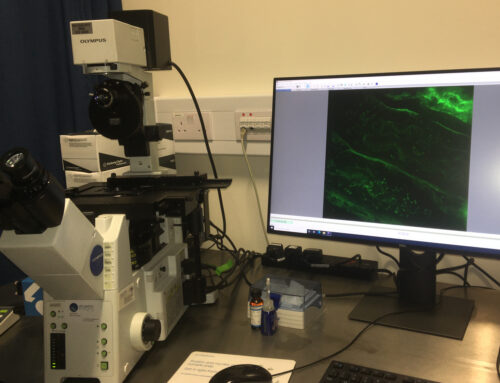Atlantic Imaging have been privileged to work extensively with Professor Mick Bailey and his group at the Bristol Veterinary School. In the first of what we will hope will be a series of features on our end users and their careers, we take a few minutes to look back at what first got Mick into science, what makes him tick and what his hopes are for the future.
Atlantic Imaging: How did you get into this line of work? What fired your interest?
Mick Bailey: I did a veterinary degree with every intention of being a practicing vet. I was inspired by James Herriot. Degrees were hard to get into but I quickly realised that a large part of the job of being a vet is routine stuff like squeezing anal glands, neutering, vaccinating and treating flea allergies, and I didn’t find that an exciting prospect for a whole career. I saw a PhD advertised in Cambridge on immunology and parasitology. I did try a year as a practising vet, but I realised that science is what I wanted to do.
AI: Which parasite did you work on?
MB: Strongylus vulgaris, a parasite of horses. It has an unusual lifecycle where the larvae migrate from the intestine up to the aorta where they sit for three months before migrating back – I can’t imagine why that adds value to the parasite life cycle! It was not a project likely to attract lots of funding. I then saw a postdoc advertised in the field of mucosal immunology; how the gut responds to antigens. I was interested in how the gut decides to react to harmful pathogens whilst tolerating harmless food antigens (which we generate active tolerance to). We need to generate mucosal vaccines vs mucosal pathogens in order to somehow persuade the immune system that those pathogens are dangerous without badly damaging the intestine.
AI: Can you give me an example of a mucosal pathogen?
MB: The classical example is Salmonella, which causes severe disease and which gets in through the intestine. We can immunise against it systemically to get an IgG response, but Salmonella has to have got in and caused damage before the immune response can act. A mucosal response could prevent all that damage.
AI: The infectious dose of salmonella is small. Does that make it a difficult target?
MB: It is relatively straightforward – there are effective vaccines for systemic response in chickens. A Salmonella vaccine was developed (which is what the lion symbol on the egg signifies) – vaccines for flocks have effectively eradicated this problem.
A proposed approach to combat greenhouse gas emission from cattle is to vaccinate to reduce level of function of rumen bacteria to reduce methane. 5-10% of energy from feed is estimated to be lost in the generation of methane!
AI: Your field of expertise is a microscope-heavy one.You must have got into microscopes early on in your career?
MB: I started with single-colour microscopy – using immunohistology (alkaline phosphatase, peroxidase etc) and did a lot of work with that. We got into flow cytometry first. When we started to look at multiple colour flow cytometry in early to mid 90s, we realised that when you identify different cell subsets you need to know where those subsets are in tissues. Are they interacting or not? So we therefore need to do microscopy with multiple markers to identify multiple subsets.
AI: You seem to like Leicas! Is there a reason for that?
MB: There’s a historical reason for that; one of the people who worked at Langford was a great microscopist and went to work at Leica. We trusted his opinions and that he understood what was going on with the equipment. We had trust in him as an individual.
AI: We like to feel like we’re giving our customers good value and that we are giving them what they want.
MB: I trust Alan (Tilley) and I’ve been working with him for 20 years. You have to be able to ask people who will tell you whether the products they’re marketing are NOT the right product for them.
On confocal microscopy:
MB: We deal almost exclusively with wide-field fluorescence microscopy and we haven’t really gone down the confocal route. Because we’ve been interested in spatial organization at a cellular level – confocal is often overkill for looking at spatial organization of tissues. I notice that recent emphasis on spatial biology – in some cases I’ve seen this extended to multiple colour immunofluorescence, using systems where conjugated antibodies are attached to fluorophores with cleavable linkages, and which can use up to 24 different markers. This is an exciting development for future histology. This may not be particularly usable with confocal.
AI: We’re working with a product from Confocal.NL, which is a bolt-on confocal system; the key selling points are incredible photo-sensitivity and low laser power levels, enabling long-term imaging as well as being able to image through a thick section.
MB: That is something we may get into in the future. I keep saying “we…”
AI: You’ll come back!
AI: You’ve retired, but you haven’t quite retired – do you have any specific goals?
MB: Only to see this generation at Bristol Vet School develop as a really high quality immunology/microbiology/infectious diseases group. I want to see them do well and see the vet school at Bristol continue to be recognized as a centre for mucosal immunology, infectious diseases and microbiome research. I see my role as providing them with advice to make sure that happens.
AI: Before we go, I was just going to say, what’s the best thing you’ve got out of your career? Give me one pearl of wisdom!
MB: The most exciting thing I’ve got out of this is just knowing something; knowing things that nobody else knows. You have a scientific question that you’ve just reached the point where you can ask that question. It’s not a question that’s been asked before… you have a question, you design the experiment and you see the results. And a lot of the time the results go wrong – they aren’t what you expected, because your experiment was not as well-designed as you thought it was, or your hypothesis was actually wrong… but sometimes you see the result and you think “Marvelous, that’s just wonderful!” and it’s like footprints in the snow. You’re the first person to make those footprints in the snow.
AI: Thank you for your time Mick. We wish you all the best for the future, and many more footprints.
